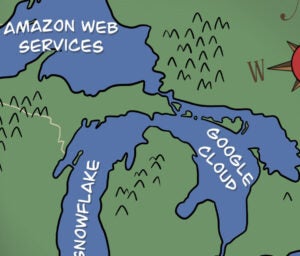 Hundreds of mobile ad networks are working on a transition to programmatic trading.
Hundreds of mobile ad networks are working on a transition to programmatic trading.
One of them is Orange Advertising, a unit of European wireless carrier Orange. Last year, the company realized it needed an answer to the impression-buying trend, and began evaluating ad tech partners to support a nascent trading desk. It ultimately settled on an vendor-neutral approach that included buying through companies like LiquidM, AppNexus, StrikeAd, and AdMarvel.
“We wanted to be technology agnostic. We didn’t want to build just one platform,” said Giuliano Stiglitz, CEO of Orange Advertising Americas. The company is focused on developing a programmatic strategy focused on Latin America, and in Stiglitz words, is “building a state-of-the-art trading desk in Colombia using the best U.S. technologies.”
According to Stiglitz, there are three areas where mobile buying and optimization platforms can set themselves apart. First is inventory. (“Most have overlap; that 10 to 20% that don’t overlap can really make a difference.”) Second is optimization functionality. Third is revenue model.
One of Orange Advertising’s partners, LiquidM, has sought to differentiate on the latter. The company charges a flat software licensing fee, starting at $12,000 a month and capped for most customers at $69,000, and takes no percentage on total media transacted. It offers a pilot program allowing would-be customers to test the platform before committing. Twelve customers are in pilot mode; six are full-fledged subscribers.
“Most people today resort to building their own tech stack, which takes way more headcount, and way more money,” said LiquidM CEO Christof Wittig. “Technology is often underfunded, because it’s funded by the cash flow of a media business.”
LiquidM provides and maintains ad infrastructure to its mobile ad network customers for the cost of hiring one to three developers. The approach is somewhere between IPONWEB’s dev shop model and AppNexus’s platform strategy, Wittig said.
“For us, the combination of RTB as a general procurement mechanism, plus the ability to position native ads within SDKs in close collaboration with publishers, that’s the future,” he said. “Our full stack brings together the efficiency of RTB-level procurement at scale.”
But how can LiquidM – with its 50 employees – hope to compete with players like AppNexus, in light of their long experience, market penetration, and mobile investment?
The simple answer is mobile channel specialization.
“The classic marketing mix is a multi-channel expense,” Wittig said. “But when it comes to running a campaign, under the hood pretty much everything is different.”
He continued, “If you just talk about display-online versus display-mobile, every line of code is different — and that includes rich media and video.”
As for Orange Advertising, Stiglitz said the mobile ad net’s trading desk is on a run rate to contribute 25 to 30% of the total business this year. This is a powerful achievement, he added, “considering that we were 99% direct sales, doing exclusive inventory deals just one-and-a-half years ago.”
Through the transition it will embrace the use of multiple trading platforms as a unique selling point. “We’re not going to narrow it down to two to three like most people do,” he said.














